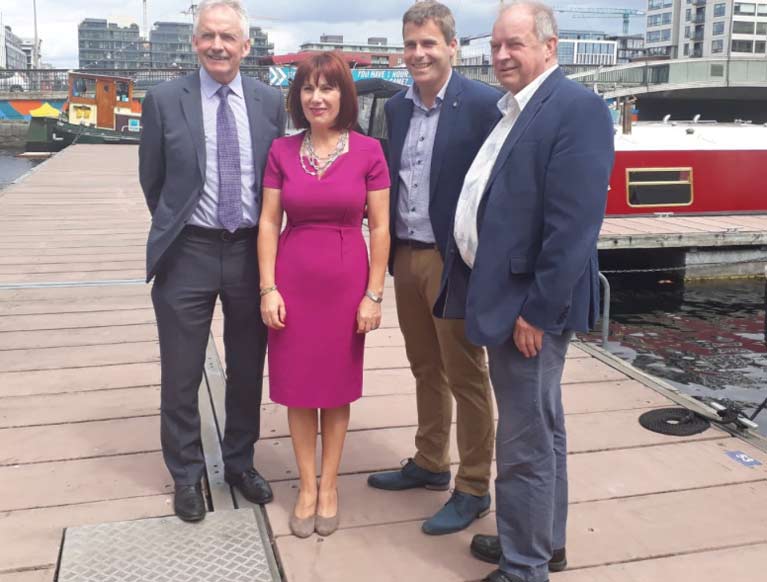The Minister for Culture, Heritage and the Gaeltacht, Josepha Madigan TD, has announced the inclusion of Ireland’s Floating Heritage in the National Inventory of Intangible Cultural Heritage.
The National Inventory is intended to raise awareness of, and respect for, our unique living culture through official State recognition. The National Inventory will also fulfil Ireland’s obligations under the 2003 UNESCO Convention for the Safeguarding of the Intangible Cultural Heritage.
Intangible cultural heritage represents living forms of heritage that cannot be touched – unlike, for example, our built heritage. It refers to the practices, representations and expressions that are central to the lives and identities of our communities, groups and individuals.
Launching the Inventory recognising 30 different aspects of Intangible Heritage Minister Madigan TD said ‘It is wonderful to see such a variety of customs and traditions from all over the country being acknowledged here today. Each of these threads in the cultural tapestry of our lives makes us richer as individuals and as a country. None of this would be possible without the work of committed volunteers all around the country, whose involvement in their communities’ cultural practices and heritage traditions have sustained them over the generations. I am delighted to honour those customs, practices and traditions through official State recognition on the National Inventory.”
 Minister Madigan with John Mc Keown, Cormac Mc Carthy of Waterways Ireland and Paul Martin of the Heritage Boats Association
Minister Madigan with John Mc Keown, Cormac Mc Carthy of Waterways Ireland and Paul Martin of the Heritage Boats Association
Irelands floating heritage is characterised by a unique ‘living relationship’ between the community of users and waterway communities and the traditional heritage boats that have been restored, adapted and/or preserved. This relationship is built on a strong foundation of traditions, knowledge and skills. These traditional skills are shared by the boat owners within the wider community and through outreach events and include for example: the intricacies of managing a barge of circa 70 tonnes with rope work; The knowledge to ensure sympathetic and appropriate barge conversions; The use and repair of Bolinder engines for which no manual exists and all knowledge is contained within the flock memory of the boating community.
Many of these vessels, barges from the Grand and Royal Canals, for example, require maintenance and restoration. This knowledge and skill is retained within the boating community and passed on inter-generationally and to new members. Floating Heritage thrives on its interaction with waterway communities and depends on those whose knowledge of traditions, skills and customs is passed on. This is a core tenet of the outreach work and knowledge sharing undertaken by the Waterways Ireland, the Heritage Boat Association and the Inland Waterways Association of Ireland,
Waterways Ireland, through our Heritage Plan 2016-2020, strives to document, preserve, promote and safeguard Floating Heritage through our Community Grants Scheme which enables grass roots awareness-raising, reconnecting communities and training in Traditions/activities/practices. Waterways Ireland and the Heritage Boat Association have also developed a dedicated oral history and placenames collection programme, all of which support the concept of Floating Heritage. These histories have been collected and curated in publications such as Fine Lines – Clear Water and Cool Metal – Clear Water. In addition to the history of these boats the individuals who worked on them, when they were work barges, has also been documented and safeguarded for this and future generations.
Waterways Ireland has previously won the World Canals Conference Guardian Award 2016 for the Traditional Heritage Boat Survey which not only documented all heritage craft on all major Republic of Ireland waterways but also documented boat builders, boating terminology and international best practice in Floating Heritage. This was progressed in 2017 and again in 2019 and will result in all our waterways being surveyed.
Waterways Ireland says it is delighted that Floating Heritage has been recognised on the National Inventory. This will result in raising the status and awareness of floating heritage, heritage boats and their history and support and enhance positive public engagement in cultural heritage.































































